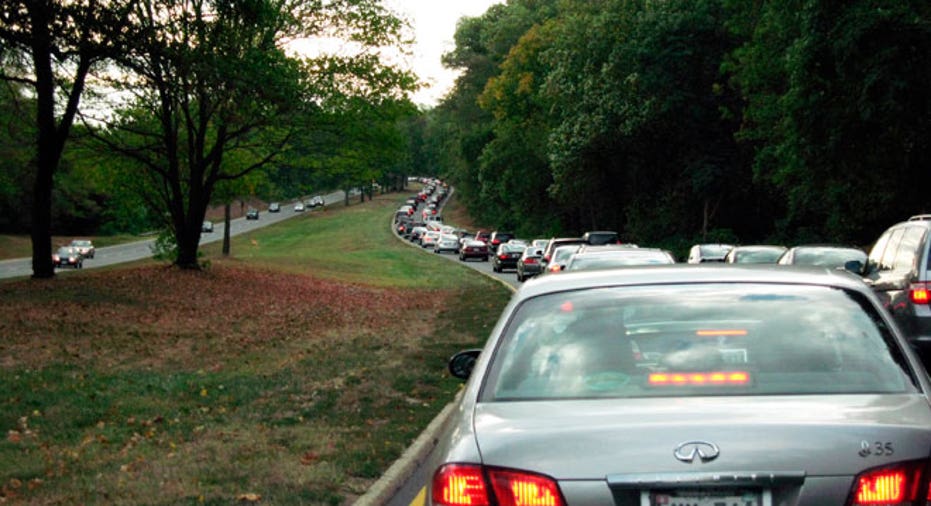Insurance Tips for Motorcyclists

Motorcyclists regularly encounter dangerous road situations.
A 2009 Highway Loss Data Institute report found more than half of motorcyclist deaths involved at least one other vehicle. Forty-two percent of two-vehicle fatal motorcycle crashes involved a vehicle turning left while the motorcycle was going straight, passing or overtaking.
National Highway Traffic Safety Administration data from 2008 showed 47% of all motorcycles involved in fatal crashes collided with another type of motor vehicle.
Recent research by a Texas Tech University psychologist suggests that the regularity of this problem isn't necessarily a case of poor driving or carelessness, but may be related to a basic human miscalculation.
Pat DeLucia, the coordinator of the Human Factors Psychology Program at Texas Tech, says her research shows that small, near objects can appear farther away than larger, more distant objects. The study is published in "Current Directions in Psychological Science."
Through computer simulation, DeLucia had study participants view two objects simultaneously, one large and one small, coming at them. The viewer must decide which one will reach them first.
The study explores how the human brain perceives objects, their size and motion and time to impact. Her findings indicate that an object's size affects distance perception, causing drivers to miscalculate motorcyclists' distance and speed.
Visual cues go wrong
It seems the brain uses two visual information cues for judging time to impact. In the first, a moving object is reflected on the eye's retina. It expands as it approaches, providing the brain accurate information about when the object will hit. This is called an optical invariant.
"It's basically determined by how big that object is on your retina and how fast it is growing on your retina; those two things actually give you the right amount of information about how long it will take the object to hit you, and that's accurate information," explains DeLucia.
However, the brain also uses what you can think of as an artist's depth cue, as if one were sketching two trees, one close up and one in the distance. This cue is a shortcut, or a human "rule of thumb."
"Those depth cues are also available when an object approaches you but they don't guarantee the correct information," says DeLucia.
The study pitted the two different cues against each other by putting the artist's depth cue of which object is closer against the retina's way of viewing the object.
"People generally picked that simpler heuristic: Larger is closer," says DeLucia.
If something is big in your visual field you assume it's closer, but that's not always accurate. What seems to be happening is that when you have small vehicles that are far away and coming closer, they don't look as close as they really are, so you think you have more time before they reach you -- as opposed to a big truck where you think you have less time.
Optical illusion or human miscalculation?
Since motorcycles are smaller than cars, the brain may use this shortcut to decide that a smaller motorcycle is farther away than it actually is. This size-arrival effect can lead drivers to misjudge when a motorcycle will arrive at an intersection and could be considered a contributing factor in motorcycle/vehicle accidents.
"In 75% of crashes with other vehicles, motorcyclists hit a vehicle that was in front of them [according to NHTSA], so they should try to anticipate what other drivers may do and remain visible with lights and bright gear," says Hannah Kim, an analyst and insurance expert at NerdWallet, a personal finance site. Kim says motorcyclists should also avoid risky maneuvers, including lane splitting, weaving in and out of lanes, passing vehicles and trying to overtake other vehicles. Most of the time, drivers in other cars never see a motorcycle before it is too late.
Kim explains that despite the fact that over half of motorcyclists who died in 2011 were 40 years old and older, insurance rates are highest for those who are younger than 25 because they're considered the riskiest age group.
"It is important for motorcycle riders to act as if no one sees them and to use their horn whenever there is a chance that a vehicle will not see them," says Thomas J. Simeone, a personal injury attorney in Washington, D.C. "It is not uncommon to see accidents where a vehicle cuts off a motorcycle while turning left or enters the lane of a motorcycle."
Insurance claims for motorcycle accidents occur at a disproportionally higher rate during the initial months after the rider first purchases a motorcycle insurance policy.
Some studies from the Highway Loss Data Institute and elsewhere put the first-year motorcycle rider risk at almost four times the risk of the second-year rider. Good motorcycle insurance is especially crucial for protecting against loss.
DeLucia hopes her research will ultimately help reduce motorcycle accidents.
A tag line such as "motorcycles may be closer than they appear" could be a place to start.
The original article can be found at Insure.com:Motorcycles may be closer than they appear